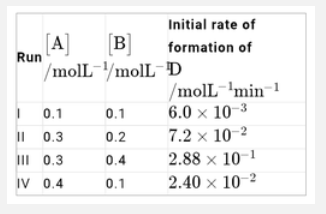During phylogenetic study, which is sequenced?
rRNA
mRNA
mitochondrial RNA
tRNA
The correct Answer is:A
To solve the question regarding which type of RNA is sequenced during a phylogenetic study, we can follow these steps:
1. Understand Phylogenetic Study:
- Phylogenetics is the study of evolutionary relationships among biological entities, which can include species, individuals, or genes. It focuses on how closely related organisms are based on their genetic information.
Hint: Remember that phylogenetics deals with evolutionary relationships and genetic similarities.
2. Identify the Types of RNA:
- The question provides four options:
A. rRNA (ribosomal RNA)
B. mRNA (messenger RNA)
C. mitochondrial RNA
D. tRNA (transfer RNA)
Hint: Familiarize yourself with the functions of different types of RNA in the cell.
3. Determine the Role of rRNA in Phylogenetics:
- Ribosomal RNA (rRNA) is a crucial component of the ribosome and is involved in protein synthesis. It is highly conserved across different species, meaning that it shows relatively few differences in sequence among closely related organisms. This makes it a reliable marker for studying evolutionary relationships.
Hint: Consider which types of RNA are more conserved and stable over evolutionary time.
4. Evaluate Other Options:
- mRNA is often variable and reflects the gene expression of an organism at a specific time, which can change rapidly.
- Mitochondrial RNA is specific to mitochondria and less commonly used for broader phylogenetic studies.
- tRNA is involved in translation but is not typically used for phylogenetic analysis.
Hint: Think about which RNA types are used for long-term evolutionary studies rather than short-term expression.
5. Conclude the Answer:
- Given the information, the type of RNA that is most commonly sequenced in phylogenetic studies is A. rRNA.
Final Answer:
The correct answer is A. rRNA.
- Phylogenetics is the study of evolutionary relationships among biological entities, which can include species, individuals, or genes. It focuses on how closely related organisms are based on their genetic information.
- The question provides four options:
A. rRNA (ribosomal RNA)
B. mRNA (messenger RNA)
C. mitochondrial RNA
D. tRNA (transfer RNA)
- Ribosomal RNA (rRNA) is a crucial component of the ribosome and is involved in protein synthesis. It is highly conserved across different species, meaning that it shows relatively few differences in sequence among closely related organisms. This makes it a reliable marker for studying evolutionary relationships.
- mRNA is often variable and reflects the gene expression of an organism at a specific time, which can change rapidly.
- Mitochondrial RNA is specific to mitochondria and less commonly used for broader phylogenetic studies.
- tRNA is involved in translation but is not typically used for phylogenetic analysis.
- Given the information, the type of RNA that is most commonly sequenced in phylogenetic studies is A. rRNA.
The correct answer is A. rRNA.
Similar Questions
Knowledge Check
Phylogenetic system was given by
AEngler and PrantlBPlinyCJohn RayDR.H. Whittaker
Phylogenetic classification is based on
View SolutionOf the four widely known systems of classification one remains less phylogenetic and more natural, which is of
View SolutionDuring prolonged fasting,the sequence of organic compound used by body is
View SolutionDuring prolonged fasting,the sequence of organic compound used by body is
View SolutionAccording to phylogenetic classification systems, organisms belonging to :
View SolutionDuring the kinetic study of the reaction , 2A+B→C+D, following results were obtained

Based on the above date which one of the following is correct ?
View SolutionDuring the kinetic study of the reaction, 2A+B→C+D, following results were obtained

Based on the above data which one of the following is correct?
View Solution
